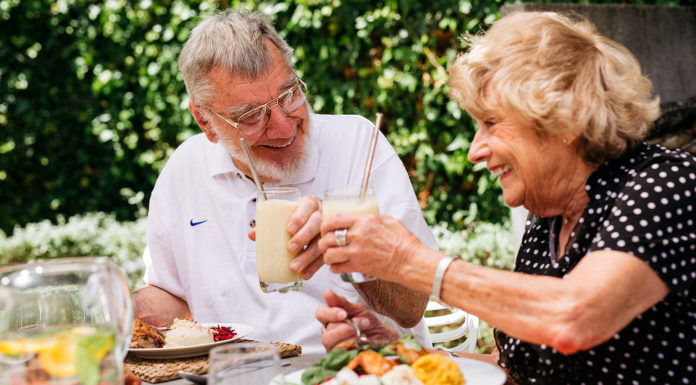In recent years about half of nursing graduates have a job before they receive their state final results; 60 per cent have jobs within three months of graduating and about three per cent of graduates are still seeking graduate jobs 12 months after first applying.
About half of schools reported strong or higher than usual applicant numbers for their 2017 degree places, with others reporting steady demand. But a number of schools also reported a drop-off in interest or strong initial interest that did not result in enrolments. One school reported the financial concerns and subsequent withdrawals of prospective mature students around swapping full-time employment for three years of study during the current increase in house prices.
International student interest was steady to lower than previous years.
Five schools reported strong to increased enrolments of male students, with males comprising 11 to 30 per cent of intakes of some degree programmes.
Currently about 8 per cent of the nursing workforce is male, with the Nursing Council 2015 workforce statistics report noting that the male nursing workforce was growing proportionately faster than the female workforce. This is reflected in the mean age of male nurses being younger at 42.4 years old, compared with 45.7 for female nurses.
A number of schools also reported an ongoing trend for younger cohorts of nursing students, with the majority of students now being aged under 25 and school leavers making up between 10 and 58 per cent of cohorts.
Survey responses
High interest in nursing degree places saw EIT increase intakes at its two sites offering nursing degrees. Jennifer Roberts, EIT’s head of school, said it budgeted for 65 places in Napier and enrolled 68 (about 10 per cent were international students) and in Tairāwhiti budgeted for 32, enrolled 38, and had a waiting list. She said initially the feeling was that applications might be down due to negative press about not all graduates finding work, but this had not been the case. EIT’s Māori and Pacific intake was once again strong and comprised more than 30 per cent of the intake.
Ngaira Harker, director of nursing for Te Whare Wānanga o Awanuiārangi’s Bachelor of Health Science Māori (Nursing) said interest was similar to the previous year with 33 students accepted for 30 places, including applicants from outside the region and some enquiries about transferring into the programme. She said the programme – which includes a focus on te reo Māori, tikanga Māori and tikanga hauora – is 81 per cent Māori, 10 per cent Pākehā and nine per cent other ethnic groups. The first cohort is due to graduate at the end of this year. With 10 per cent of the Bay of Plenty nursing workforce being Māori and serving a population that is 25 per cent Māori (closer to 45 per cent in the Eastern Bay of Plenty), Harker hopes that a 100 per cent employment rate of its first graduating class will be achieved.
Strong application numbers were also received for Ara Institute of Canterbury’s programme, said head of school Dr Cathy Andrew, but while it initially had a waiting list most successful applicants were able to be offered a place in its February intake of 140 students. Application and intake numbers for its July intake, however, had been down for the past two years and the school was not sure why. The vast majority of its 2017 intake (80 per cent) was under 25 years of age. About seven per cent of the intake were male, 10 per cent Māori, seven per cent Pacifika and three per cent were international.
Jane Anderson, nursing degree programme leader for NorthTec, said the steady interest was similar to recent years and it also initially had a waiting list for its 50-student intake. It had growing interest from younger students in recent years,with the under 25s making up 59 per cent of the cohort (10 per cent of those were school-leavers). NorthTec had no Pacific students this intake (only 4 per cent in the whole programme) but Māori made up 20 to 34 per cent of the programme’s three cohorts. Visa problems meant there were slightly fewer international students than in the past (eight per cent of intake).
Taranaki’s WITT nursing school reported that applications were “significantly up” on previous years and it had increased its usual intake from 55 places to 62 this year. Head of school Diana Fergusson said its graduates had had really good employment rates over the past few years but it was hard to know whether this had lead to the increased interest – including a significant increase in school leavers (plus interest from students outside Taranaki). Fergusson said its Māori student numbers had stabilised at about 20 per cent and it had no international students in its new intake.
Chris Dunn, health programmes manager for NMIT, said it had high initial interest in the 2017 intake and had offered extra places, but for a variety of reasons the cohort by March was the usual intake size of 65 students. This year did see an increase in the number of Māori and Pacific enrolments, however, and students aged over 35 seeking a change in profession. There were only two international students in the new intake and NMIT’s BN programme overall has nearly 9 per cent male students.
The University of Auckland’s nursing school has noted a steady trend towards more males and more mature students in recent years. The outgoing head of school, Associate Professor Judy Kilpatrick, said it had 23 males (19 per cent) – up on previous years – enrolled in its 2017 intake. It took on 117 students this year (slightly above its 110 planned places) with school-leavers making up 58 per cent of the intake, which was down on previous years with mature student (alternative admissions) up. Māori and Pacifika students were also up on previous years, with 15 Māori and 12 Pacifika students in this year’s intake, with many enrolling through the medical and health science faculty’s Māori and Pacific Admission Scheme.
Dr Philippa Seaton, director of the University of Otago’s Christchurch-based Centre for Postgraduate Nursing Studies, said the second intake of its pre-registration Master of Nursing Science was up 60 per cent on last year. She said 30 per cent of the 2017 intake were male, 40 per cent were under 25 and there was increased interest from international students.
Otago Polytechnic had 230 applicants – slightly less than previous years – for its planned 125 places but ended up starting the year with 118 students. Ian Crabtree, the head of school, said while applications were slightly down the standard of the majority of applicants were very high. Of the latest intake 78 per cent were under-25 (27 per cent school leavers), four per cent were male and 8 (6.7 per cent) were international students.
Brighid McPherson, heading of nursing at Te Ohomai Institute of Technology (the merged Waiariki and Bay of Plenty polytechnics) said interest was initially very strong across both campuses but late last year a number of Tauranga applicants rang to defer starting their degree. She said most cited the housing cost boom and being unwilling to give up full-time employment to become students. But it started the year with more than 150 students enrolled for its planned 140 places at both campuses, with about a third or more identifying as Māori. McPherson said in recent years it has noticed a reduction in second-chance learners and an increase in 17-27-year olds.
Southland’s SIT reported a very slight decrease in applications for its 2017 intake but also a decrease in the number of declines due to applicants not meeting entry criteria. Head of nursing Sally Dobbs said 71 per cent of its 2017 intake are under-25, nine per cent are male, 10 per cent are Māori and there are no international students.
Associate Professor Stephen Neville of Auckland’s AUT nursing department said application interest was strong as in recent years and it had a waiting list after filling the intake’s 130 places. He said international interest was lower than previous years, Pacifika numbers were up and there was a small decrease in Māori numbers.
Porirua’s Whitireia nursing school had an upswing in male students in its Pacific nursing programme this year. Head of school Carmel Haggerty said eight of its 41 Pacific intake (nearly 20 per cent) were male, compared with 4 to 6 in most years. Overall she said application interest was similar to recent years and and they had a waiting list for its general programme (which had 110 places) and filled most of the 20 places in its Māori programme.
Application numbers were on par with recent years says Dr Willem Fourie, head of South Auckland’s MIT nursing school, but it had improved the conversion rate from application to actual enrolments including some targeted work on improving Māori enrolments. He said it met the target for its BN intake but was slight below target for its BN Pacific programme, which was not due to lack of interest but a ‘ripple effect’ of enrolments and graduates over a three-year cycle. Māori make up about 12 and Pacific students 37 per cent of the BN programme. Pacific students make up about 90 per cent of the BN Pacific with the remaining 10 per cent mostly Māori students.
Glennis Birks, manager of Waikato’s Wintec nursing degree, said applications had remained steady for the past five years and it started the year with its 150 places filled. Fourteen per cent are male, nearly two-thirds are under-25, international students made up 11 per cent and Māori and Pacific enrolments were slightly up from 20 per cent last year to 27 per cent this year.
Mixed trends emerged this year at UCOL‘s nursing school’s three campuses with Penny O’Leary, head of nursing education, reporting slightly reduced intakes from the planned 100 places at Palmerston North and 35 in Whanganui but an increase from 28 to 33 places in the Wairarapa. There were also diverse trends in age of enrolments with school leavers making up 36 per cent of the Whanganui intake, 27 per cent of the Wairarapa intake but only 10 per cent of the Palmerston North intake. The proportion of male students ranged from 15 per cent in Wairarapa and 11 per cent in Palmerston North to seven per cent in Whanganui. The Māori intakes ranged from 27 per cent in Wairarapa to 30 per cent in Palmerston North and 39 per cent in Whanganui. UCOL only enrolled international students in its Palmerston North programme where 9 per cent of enrolments were international students.
Massey University’s head of school Dr Mark Jones said it had a 25 per cent increase in applications to study at its Manawatu campus, a 10 per cent increase for its Albany campus, which had 50 places on offer this year, and steady interest in the Wellington programme. He said like other schools it was keen to for its intakes to reflect the proportion of Māori and Pacifika people in the community but was a “way off this as yet”. He said that the majority of its students continue to be younger women, although the university actively encourages applications from anyone considering a future in nursing.
No information was available from Auckland’s Unitec nursing degree programme.





















